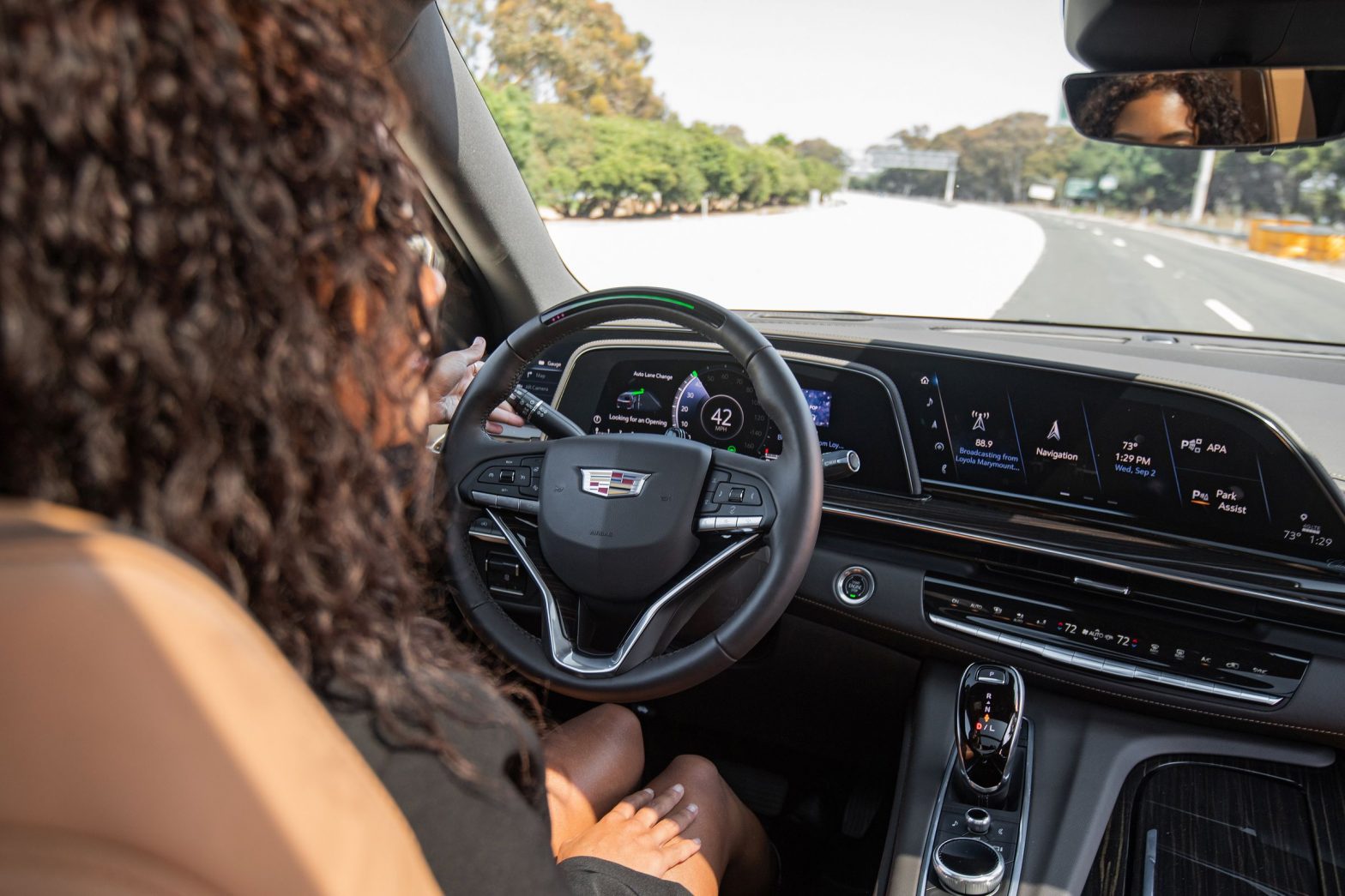/
By 2025, the automaker says Super Cruise will be operational on approximately 750,000 miles of road in the US and Canada, including more rural, back woods roads.
Share this story
:format(webp)/cdn.vox-cdn.com/uploads/chorus_asset/file/24822928/cadillac_escalade_super_cruise.jpeg)
Image: General Motors
General Motors may be struggling when it comes to fully autonomous driving, but the company is still feeling bullish about the future of hands-free driving. Today, it announced plans to expand its Super Cruise advanced driver-assist system, which allows drivers to take their hands off the steering wheel on certain roads, to cover nearly double the number of miles it did before.
Today, Super Cruise is operational on 400,000 miles of road in the US and Canada. The company plans on adding around 40,000 miles of new roads every quarter over the course of two years, so by the end of 2025, Super Cruise will cover approximately 750,000 miles in the US and Canada.
Launched in 2017 with the Cadillac CT6, Super Cruise uses information from cameras and radar sensors embedded in the car, GPS data, and lidar mapping data to allow for hands-free driving and, in some cases, automatic lane changes. It pairs this capability with a driver-monitoring system that uses an infrared camera to make sure the driver is keeping their eyes on the road at all times in case Super Cruise needs to hand back control to the driver.
For years, Super Cruise was limited to divided highways that GM had laser mapped and approved for use. But starting with its model year 2023 vehicles, the company started adding nondivided state and federal highways, which are sometimes called routes — main roads that connect smaller cities and towns. That includes popular roads like US Route 66, the Pacific Coast Highway, the Overseas Highway, and the Trans-Canada Highway.
GM says it will continue to add more routes and nondivided highways over the next few years to expand Super Cruise’s operational domain. According to David Craig, chief of maps at GM, these will include “two lane highways that are designed to connect the little towns, the more rural areas, the back woods areas where people take their RVs and campers and go hiking and hunting and camping.”
For its mapping data, GM contracts with a Michigan-based company called Dynamic Map Platform, which operates a fleet of vehicles that scan “every mile of road” using lidar laser sensors, Craig said. Those maps are then fed back into GM’s central system, which pushes out quarterly software updates to ensure each vehicle is operating with the most updated version of the map.
Super Cruise’s capabilities will remain the same, and the system won’t be able to handle any new driving scenarios, like traffic lights and four-way stops, said Jeff Miller, product manager for Super Cruise.
The company recently stopped using its “Ultra Cruise” brand, which was intended to be its big Tesla competitor, deciding instead to merge the team that was working on it with its Super Cruise division. Ultra Cruise was intended to cover “95 percent of driving scenarios” on over 2 million miles of road.
To be sure, GM says it is approaching the concept of hands-free driving as safely and cautiously as it can. Miller contrasts this approach with Tesla’s Full Self-Driving, which still retains its status as a beta product despite being available to over 400,000 Tesla owners in North America.
“We’re not going to beta test on our customers,” he said, “like some other competitors do.”
Still, GM is chasing Tesla in some respects. The electric automaker’s Full Self-Driving program is operational on local roads and residential streets and purports to handle more complex situations like roundabouts, traffic lights, and four-way stops. How well it handles these scenarios is open to debate, as regulators and safety experts continue to evaluate and study the technology.
What is clear is that dozens of people have died while using Tesla Autopilot, and at least one person appears to have been killed in a crash while using Full Self-Driving. Miller says that is not the case with Super Cruise.
“Our customers have driven Super Cruise completely hands-free 160 million miles,” he said, “and there has not been one accident attributed to Super Cruise.”
Which is not to say there won’t be an accident someday, especially as Super Cruise expands its map and becomes available to more customers. “I mean, there could be,” Miller said. “We designed the system as robustly as possible.”
